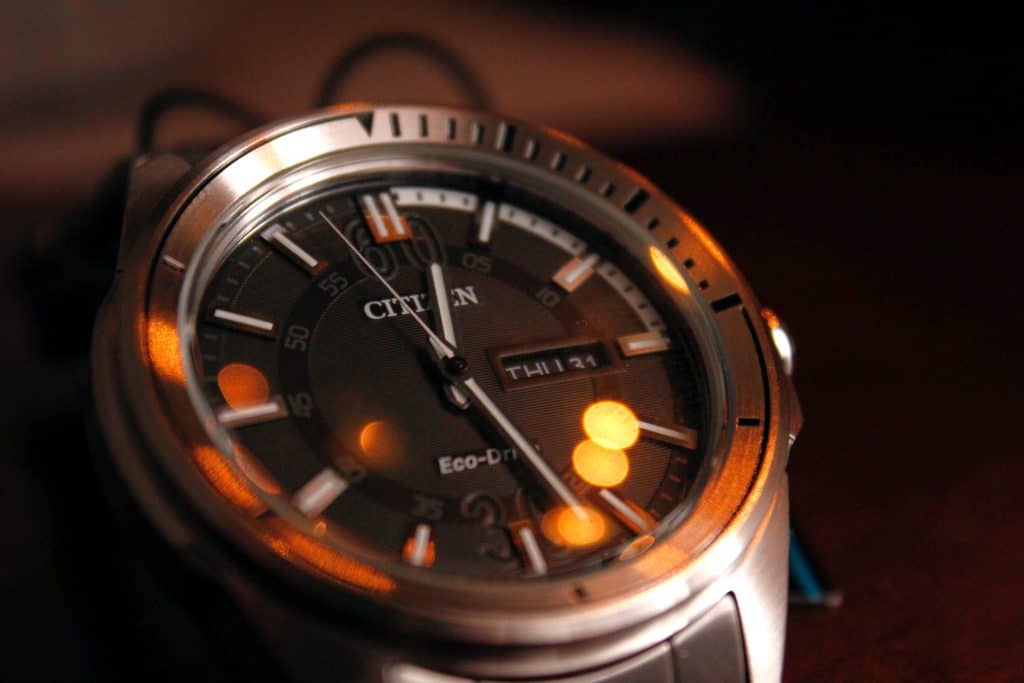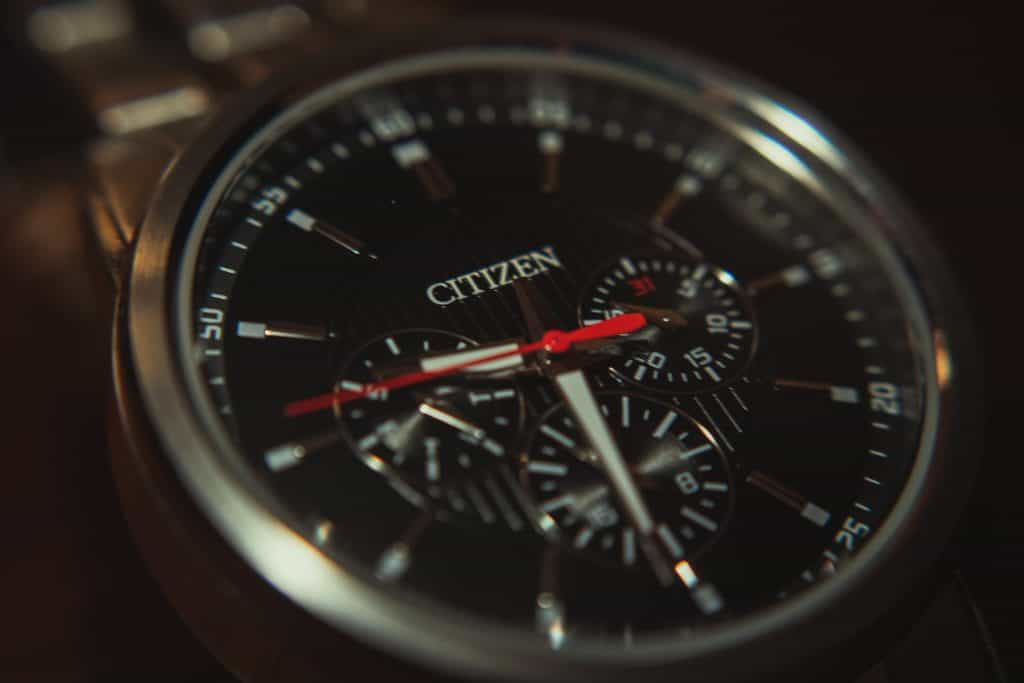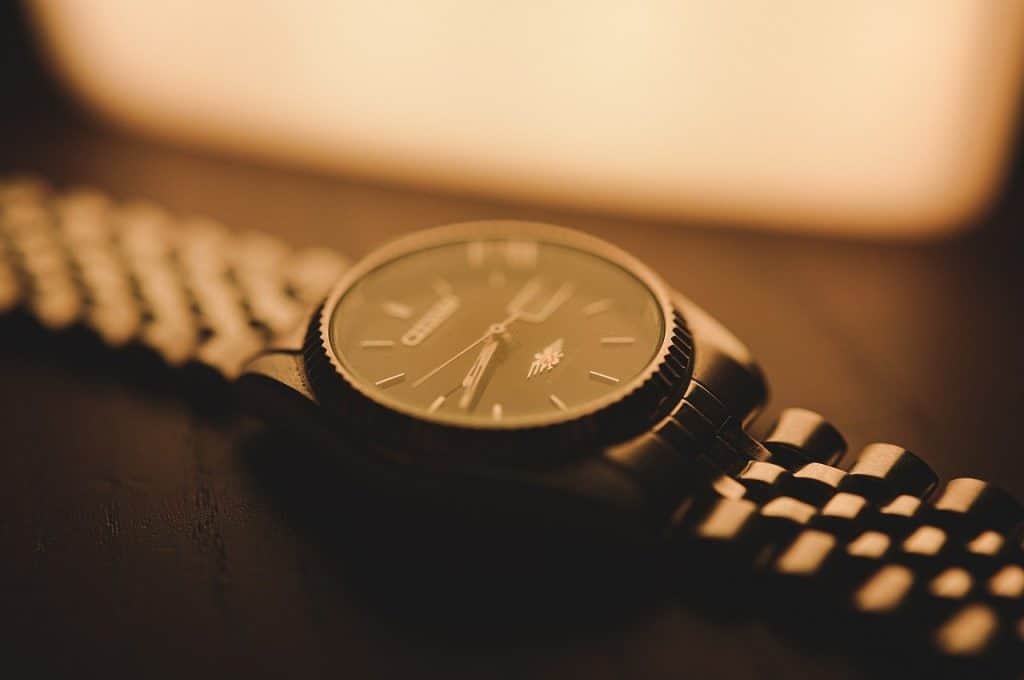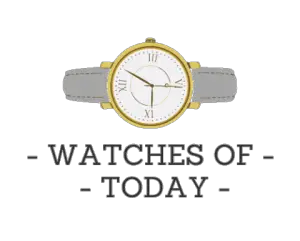Like many watch brands, Citizen watches have stood the test of time, combining quality with effortless style at an affordable price. You probably have a treasured Citizen watch in your collection right now, and you just can’t remember the exact model when someone compliments you and asks, “What kind is it?” So how can you find this out? The serial number, of course!
Citizen watches have serial numbers on the back of the watch case, indicating the year and month of manufacturing. Any Citizen watch made after the late 1950s should have a serial number.
We’ll talk about locating the serial number on your Citizen watch and how to use that to determine the model. We’ll also discuss what the other back case markings mean. This way, you’ll feel confident knowing how to use the serial number on your watch to determine the specific model.

Table of Contents
How To Read The Serial Number
Serial numbers are often engraved on the backs of watch cases because it helps businesses keep track of things like the batch it came from, the year or month it was made, who made it, and so on.
Similarly, serial numbers can help collectors like you, too, because, as we mentioned, serial numbers usually state the year of production and sometimes the month. This set of numbers can also keep you somewhat protected in the event of a lost or stolen watch.
For example, if you buy a Citizen watch, Citizen knows you are the owner. Should something happen to that watch–it gets stolen or misplaced–you can phone Citizen and report your missing watch.
If you’re shaking your head, wondering how that will help, well, eventually, that watch will need to be serviced. Should it have been stolen, any authorized jeweler of Citizen or any stores from the company itself will flag the timepiece.
Okay, so how can we read the serial number?
It’s pretty straightforward, but first, note that the most critical factor is knowing which decade your watch was made. If you’re unsure, then reference online catalogs or use a handy Movement Table. A Movement Table is valuable for watch collectors looking to identify old, vintage watches.
Most serial numbers are 6, 7, or 8 digits, for starters. The first digit of the serial number indicates what year it was produced during the decade. So, for example, look at this serial number:
90203597
It’s an eight-digit serial number, but that doesn’t matter here. The first number is “9”, so this watch was made in a year ending in 9. That could be 2019, 2009, 1999; you get it.
The next two digits indicate the month it was produced.
90203597
This means the watch was made in February.

So that brings us to the question, which decade is it from?
Here is where you may want to dig into the Movement Table. If you don’t want to go that route, you’ll have to research previous models Citizen has created, or you can look at the case number and other markings for clues.
This watch example has a marking description that says ‘parawater‘ on its back case. That’s a clue! After doing a little research about parawater, we can determine that this watch was made before 1973.
If your watch says “water-resistant” on the back, you have a watch produced after 1972-1973. Around this time, companies stopped using the term ‘Parawater’ in place of ‘water-resistant’ and used this term moving forward.
This information narrows down our example even further. Because it has to end in a 9, this could mean the watch had been made in 1969, 1959, etc.
Luckily for us, this watch has an additional set of numbers, so we can use that to gather more information. Some watches have just a serial number (can also be called a case number), while others have both a serial and case number.
This watch has a case number of:
4-520068
Looking at a movement table, we see that ‘52’ indicates the watch movement type. The ‘52’ movements were made in 1965, so this tells us that our example watch was produced in 1969.
If we know the watch was produced in February of 1969, well, that narrows down our search a lot!
What Do The Numbers On The Back Of A Citizen Watch Mean
The numbers on the back of the watch are the serial numbers. With these numbers, you can figure out a lot about a certain timepiece, such as when it was created and what model it is.
To decode these numbers, you can follow the steps laid out above. It can be a kind of puzzle, but it usually isn’t too difficult.
With these numbers, however, there’s a lot to find out. Certain Citizen watches are much older (and maybe even more valuable) than others. Some watches might be limited editions or collectors items. With the numbers on the back, the serial numbers, you can find this out.
Now, Citizen watches aren’t known to be the best at holding their value, but you can find out if you have a rare or vintage timepiece. Or, with the numbers on the back, you can also find out what model you have, in case you forgot or purchased a timepiece of someone who doesn’t know the model.
How Citizen Got Its Start

The Name Change
As we mentioned before, it wasn’t until the 1950s that Citizen began adding serial numbers to their watches. The company has been a well-known watchmaker for decades, but how long has the Citizen been around?
It all started in 1918, during the last year of World War I. Citizen wasn’t called Citizen at the time–instead, it was called the Shokosha Watch Research Institute.
The company changed its name to Citizen when introducing the first pocket watch in 1924. At the time, the mayor, Mr. Shimpei Goto, named the watch Citizen to exemplify his hope of the luxury watch becoming an affordable item for every citizen across the globe.
It also made sense to change the name from the Shokosha Watch Research Institute to Citizen once it was bought out by Yosaburo Nakajima, Citizen’s Watch Co.’s first president. Determined to produce a watch in Japan, he helped Citizen form its roots as one of the world’s most affordable and well-known watch brands.
The Technology
During the 1930s and 40s, Citizen introduced a 10 ½ ligne caliber (a ligne is an old-fashioned unit of length that watchmakers still use today) and an 8 ¾ ligne caliber and helped out with wartime efforts in producing chronometers and igniters for the military.
In the 1950s, about twenty years after the company’s conception, Citizen created the first men’s wristwatch in Japan to have a date display on the dial.
It was a busy year for Citizen in 1956 as they launched the Parashock, which was Japan’s first shock-proof watch, the Auto, the company’s first automatic-winding watch, and the Citizen Parawater in 1959.
When the 1970s rolled in, Citizen started moving away from the mechanical movements that stormed the past few decades in favor of producing quartz watches, offering its first quartz timepiece to the public in 1973 and the iconic Crystron Mega Quartz two years later. The Crystron Solar Cell burst onto the scene in 1976 as the world’s first analog quartz watch powered by light.
Citizen kept its successful grip tight on the watch industry in the 1980s, becoming the world’s largest producer of watches and watch movements. In 1981 Citizen introduced the highly-successful 1300m Professional Diver’s watch- at the time, it was the world’s most water-resistant watch.
They didn’t stop innovating there; however, as in 1987, the Voice Master (Voice Memo in Japan) was unveiled, cemented in history as the first wristwatch with voice recognition technology.
The 1990s gave us the brand’s famous Eco-Drive line, which remains their number one seller today.
During the years, Citizen has partnered with many other watch companies and parts manufacturers like Bulova and The Rhythm Watch Co.. Most recently, Citizen has adopted a multi-brand strategy, merging with Citizen Shoji and acquiring manufacturing subsidiaries.
